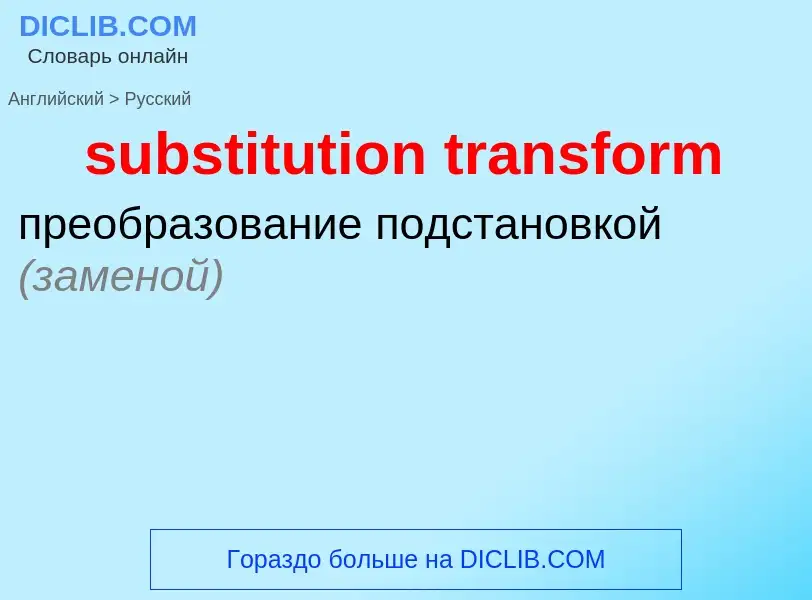Translation and analysis of words by ChatGPT artificial intelligence
On this page you can get a detailed analysis of a word or phrase, produced by the best artificial intelligence technology to date:
- how the word is used
- frequency of use
- it is used more often in oral or written speech
- word translation options
- usage examples (several phrases with translation)
- etymology
substitution transform - translation to russian
математика
дискретное преобразование Лапласа
z-преобразование
математика
принцип подстановки
Definition
Wikipedia
In mathematics, a change of variables is a basic technique used to simplify problems in which the original variables are replaced with functions of other variables. The intent is that when expressed in new variables, the problem may become simpler, or equivalent to a better understood problem.
Change of variables is an operation that is related to substitution. However these are different operations, as can be seen when considering differentiation (chain rule) or integration (integration by substitution).
A very simple example of a useful variable change can be seen in the problem of finding the roots of the sixth-degree polynomial:
Sixth-degree polynomial equations are generally impossible to solve in terms of radicals (see Abel–Ruffini theorem). This particular equation, however, may be written
(this is a simple case of a polynomial decomposition). Thus the equation may be simplified by defining a new variable . Substituting x by into the polynomial gives
which is just a quadratic equation with the two solutions:
The solutions in terms of the original variable are obtained by substituting x3 back in for u, which gives
Then, assuming that one is interested only in real solutions, the solutions of the original equation are

